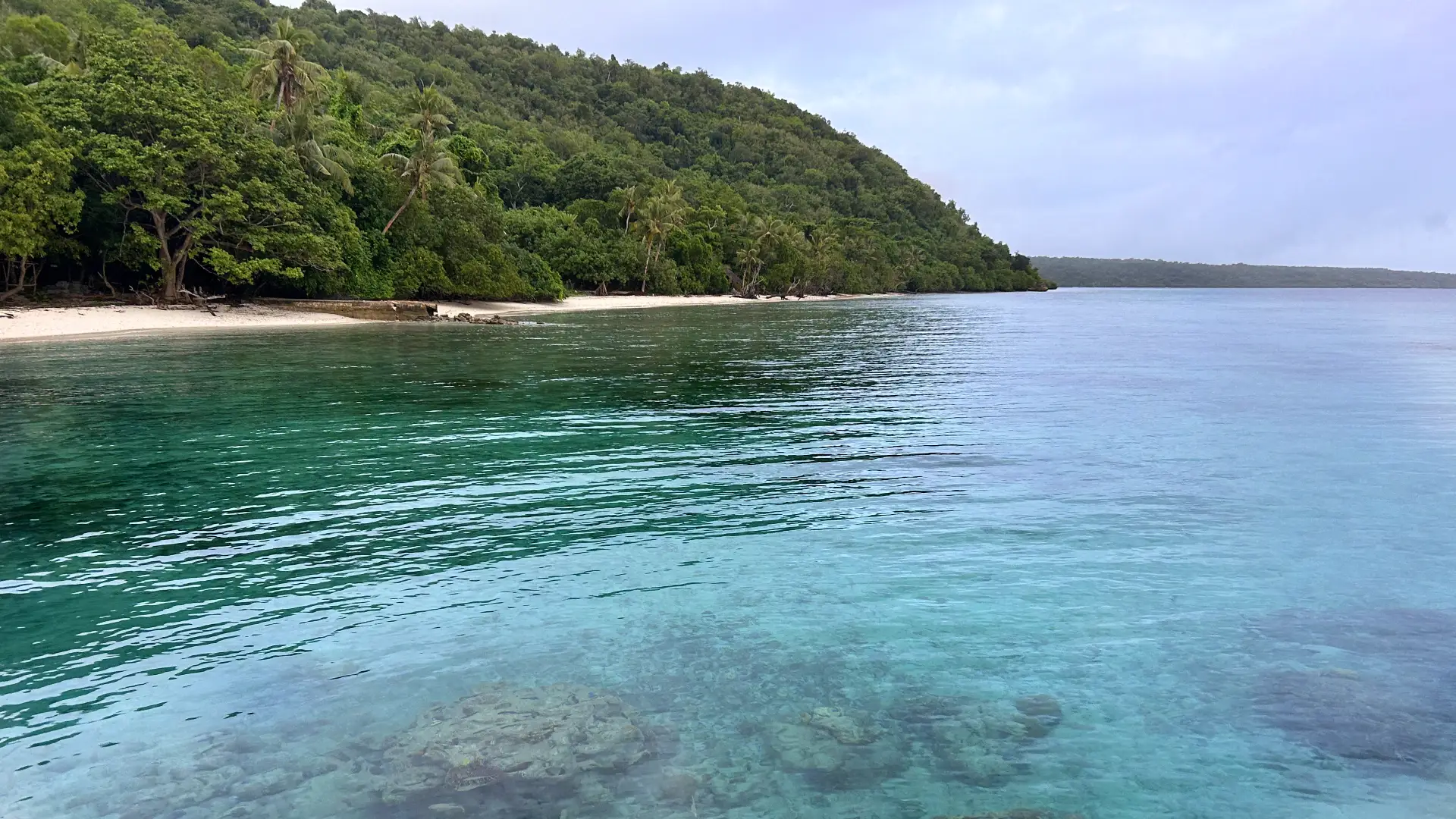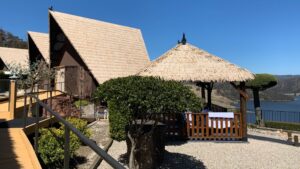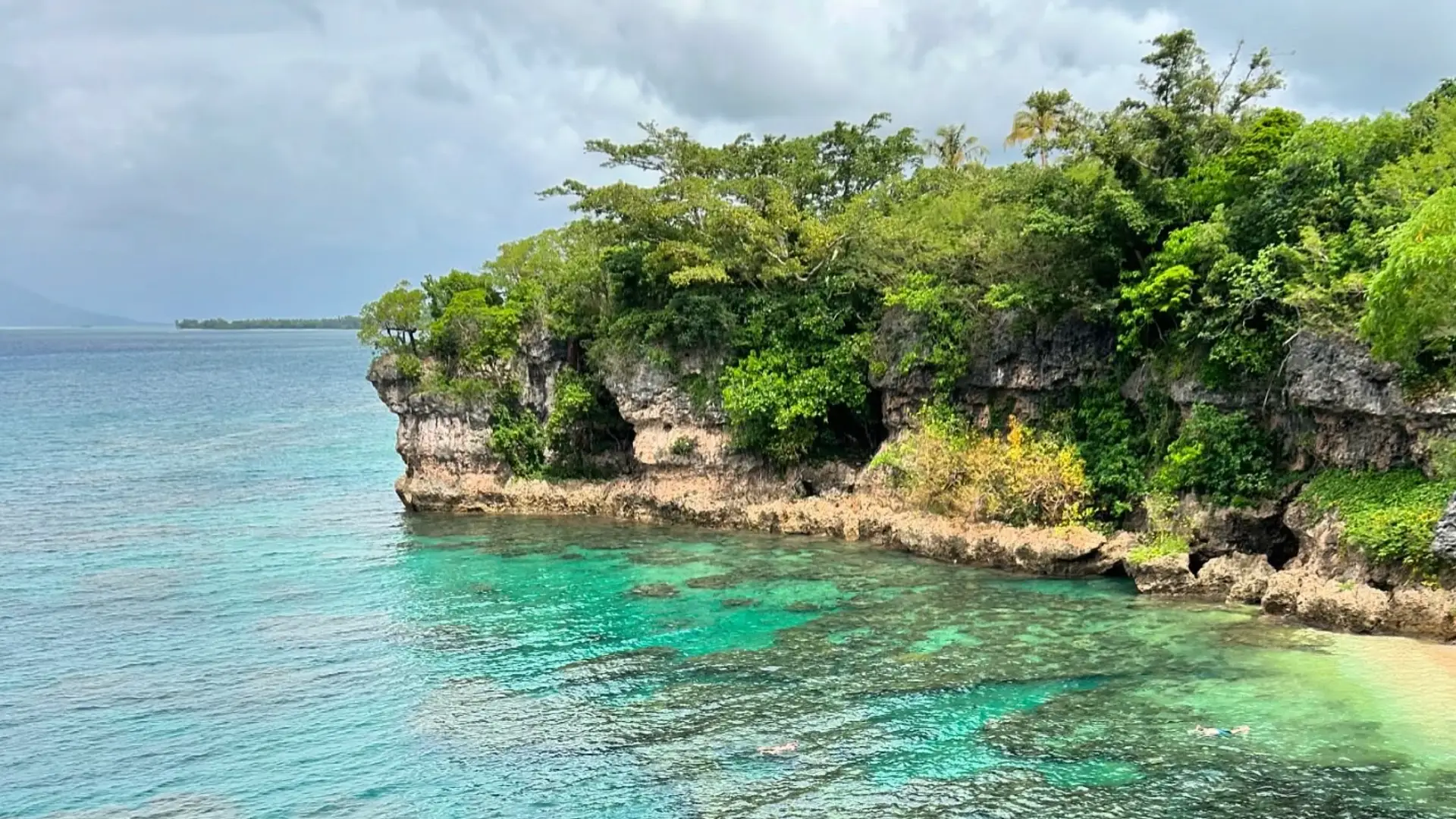Caves, hot pools and plenty more walking tracks await in the western Blue Mountains.
You’ve checked out the Three Sisters, seen Scenic World and went to Wentworth Falls.
They’re all incredible sites, but… what’s next?
It’s easy to forget just how vast the Greater Blue Mountains area actually is – a whopping 1.03 million hectares.
That’s more than six times the size of the city of Sydney.
Going slightly beyond the most-visited sites in the area can be well-worth the journey.
Here’s a guide to the perfect weekend in the Western Blue Mountains, beyond Katoomba.
What to do in the Western Blue Mountains

Day 1: Jenolan Caves
Down steep and windy roads just west of the Blue Mountains as you know them, you’ll find yourself in a valley home to Jenolan Caves.
Visiting on a drizzly, misty day, may not seem ideal, but it does to the mystery of the attraction. Plus, the weather outside won’t matter much when you’re in the caves. It’s a comfortable 15 degrees inside year round.
There are five caves you can currently visit: Orient, Imperial, Chifley, Lucas and Temple of Baal. The latter is only available to overnight guests.
On this visit, we went to Imperial on the 1:30pm tour as we were driving from Sydney to the caves in the morning. Each cave offers one or two tours per day, so if you’re keen to see a few in one day, you can.
The tours last about an hour, and take you through one of the world’s oldest cave systems with commentary as you go.
You can only visit the caves on a guided tour, which starts from $46 per adult, depending on the cave you’re visiting. Imperial and Chifley are the cheapest to see.
Tip: It’s a three-hour journey from Sydney (currently longer than normal due to road closures), Jenolan Caves are probably best visited when you’re spending the night in the mountains, otherwise you’ll spend a good portion of the day in the car.
Day 2: Japanese Bathhouse
A relaxing way to unwind after a long workweek, the Japanese Bathhouse feel like pure indulgence.
This highlight of the Blue Mountains doesn’t actually feel like the Blue Mountains at all.
As soon as you step through the threshold of the Japanese Bathhouse in South Bowenfels, you’re suddenly transported to Japan.
Immediately, you’re instructed to leave your shoes at the front door and wade through an ankle-deep pool of warm water. Before your tour of the facilities, you’ve given a complimentary pair of sandals – yours to keep even after your time at the bath is up.
On your way to the pools, you’ll pass through the tea room, where tea and Japanese meals are served in the most perfect setting. Sunken tables, wooden floors and a stone garden just add to the tranquility of the space.

The first pools you’ll come across are within a rock garden overlooking Lake Lyell (pictured above), all between 38 and 45 degrees. We’re warned by the guide that when it’s cool outside the 45-degree pool may make you feel a bit unwell, but we felt fine on the sunny 15-degree spring day.
To the right, there’s an indoor pool area – one hot pool, a cold pool and an herbal steam room.
Below the huts boasting private pools are the cave pools. (There seems to be a theme this weekend…)
Tucked into a “cave”, there are four small baths – each suitable for up to two people. But, if you’re not a couple it could be a bit close for comfort.
Two other bathing areas make up the rest of the site. One, a gathering of five small, two-person baths can be accessed via a puzzling bamboo maze, and the other is a collection of baths for one to six people.
It’s currently $90 per person for a three-hour visit to the baths. While it’s not listed on the website anywhere, we were offered extra hours at $30 each via email when we made the booking.
(Read a full review of the Japanese Bathhouse here)
What else is there to do in the Western Blue Mountains?
If you’re one to pack in as much as possible into your weekend, there’s a few shorter walks and lookouts along the way you may want to check out:
- Mermaid’s Cave Walk: A short, five-minute walk in from Megalong Road takes you to the Mermaid’s Cave. It’s more of a canyon than a cave, but still well worth a visit. Rock walls surround you and a small waterfall pours over the wall. Where is it? Near Blackheath
- Mitchell Ridge Lookout: Right off the Great Western Highway, this lookout area offers beautiful views over the valley below. It’s much less frequented than some of the other Blue Mountains lookouts and there’s a good chance you’ll have the whole place to yourself. Where is it? Just west of Mount Victoria.
- Devil’s Coach House: While you’re at Jenolan Caves, you may as well check out some of the area’s walking tracks for different perspectives of the caves. Devil’s Coach House Lookdown is certainly a climb, but well worth it for the view of the gaping cave entrance. You can walk up to the viewpoint from the car park or as part of the longer walk between the car park and the caves. The latter will also reward you with views of the Blue Lake and Carlotta Arch. Where it is? Jenolan Caves.

Where to stay in the Western Blue Mountains
Both places also feature their own accommodation option, but neither are cheap. If convenience is what you’re after, then they could be the right option for your visit.
Jenolan Caves House is currently charging $387 per night for stays in its lowest room category. The price includes a two-course dinner and cooked breakfast for two. You can also upgrade to a three-course meal if you’re particularly hungry. Staying here will also guarantee you a space on a caves tour, but the price of that isn’t included in your stay. (More info)
Japanese Bathhouse‘s accommodation is currently charging $850 per night for stays in its lowest room category. This includes all day entry to the onsen for two and two 60-minute massage. The rooms are quite basic and meals, which are pricy, aren’t included. (More info)
Between the Japanese Bathhouse and Jenolan Caves alone, it’s more than an hour’s drive. There’s little more accommodation than pubs, cabins and other small B&B-style accommodation that’s along the roads between the two.
Most of the nearby hotel and motel-style accommodation can be found in Oberon (which is closer to Jenolan Caves) or Lithgow (which is closer to the Japanese Bathhouse).
If you’re after a more budget-friendly option, luckily there’s plenty of accommodation available.
Admittedly, our mistake was not actually staying in the Western Blue Mountains.
We stayed at the Sinofield Edu-Retreat in Leura. While the stay was pleasant – especially the heated flooring in the bathroom – and tucked away, for what we wanted to see that weekend it wasn’t convenient.
How to get to the Western Blue Mountains
Roughly a three-hour drive from Sydney, having a car is by far the easiest way to access this area.
While there is a train line running through the Blue Mountains, unfortunately there is no public transport running directly to either the caves or bathhouse.
Jenolan Caves: The turn-off to Jenolan Caves from Great Western highway is just after the village of Hartley. From here, you’ll follow Jenolan Caves Road until you reach Duckmaloi Road.
There’s currently a detour in place, so you’ll need to follow that road back around to Jenolan Caves Road. When you approach, you’ll then need to wait for an escort vehicle to guide you down the steep, windy road down to the car park. You can then either take a short shuttle ride down to Jenolan Caves House where tours leave from, or walk down the track.
Japanese Bathhouse: The turn-off to the Japanese Baths comes not long after Jenolan Caves, just before you reach Lithgow. After turning onto Magpie Hollow Road, you’ll follow it until Sir Thomas Mitchell Drive, where the bathhouse is. The closest train station is Lithgow, which is about 15 minutes away. You could take a taxi if you don’t have your own vehicle.





